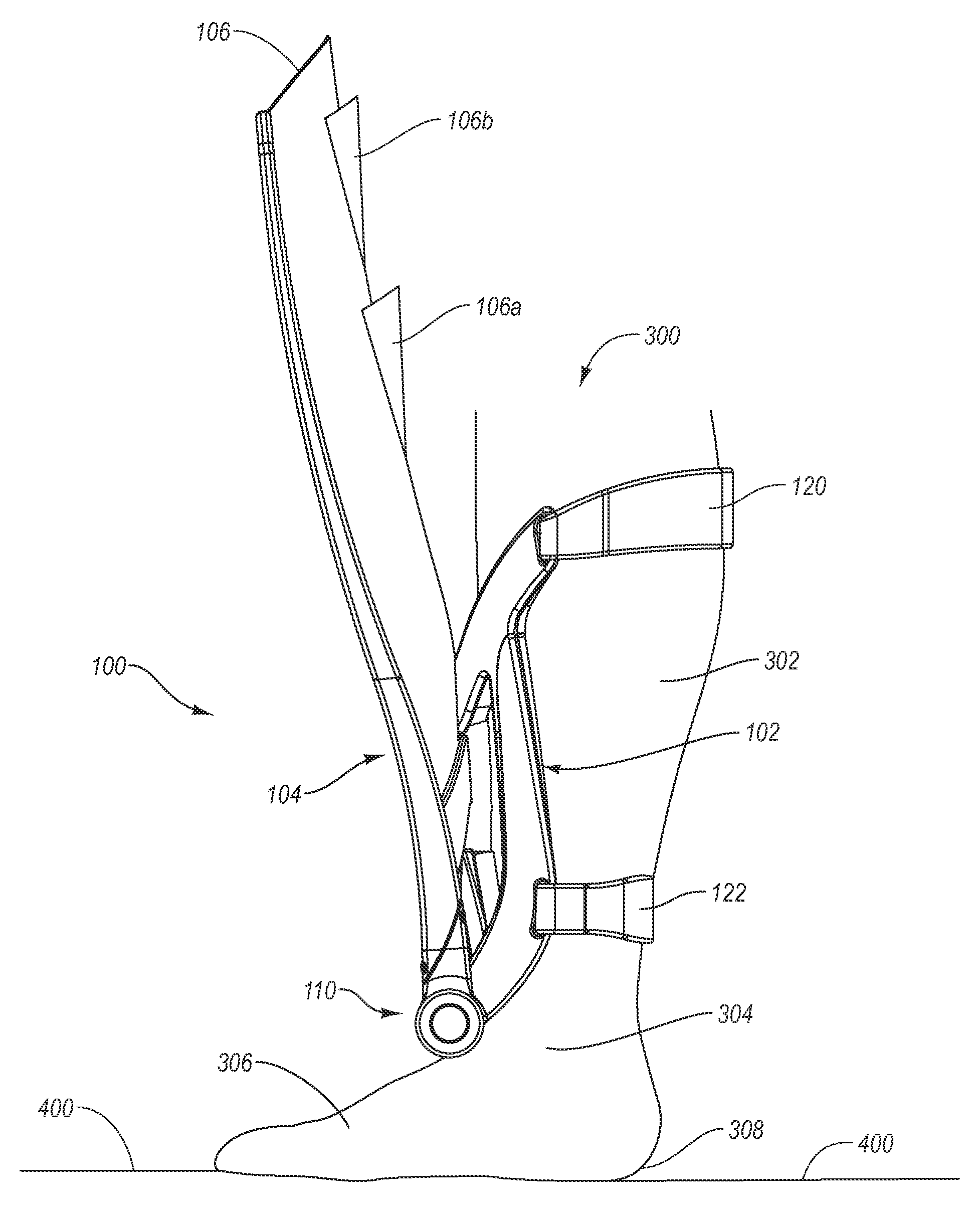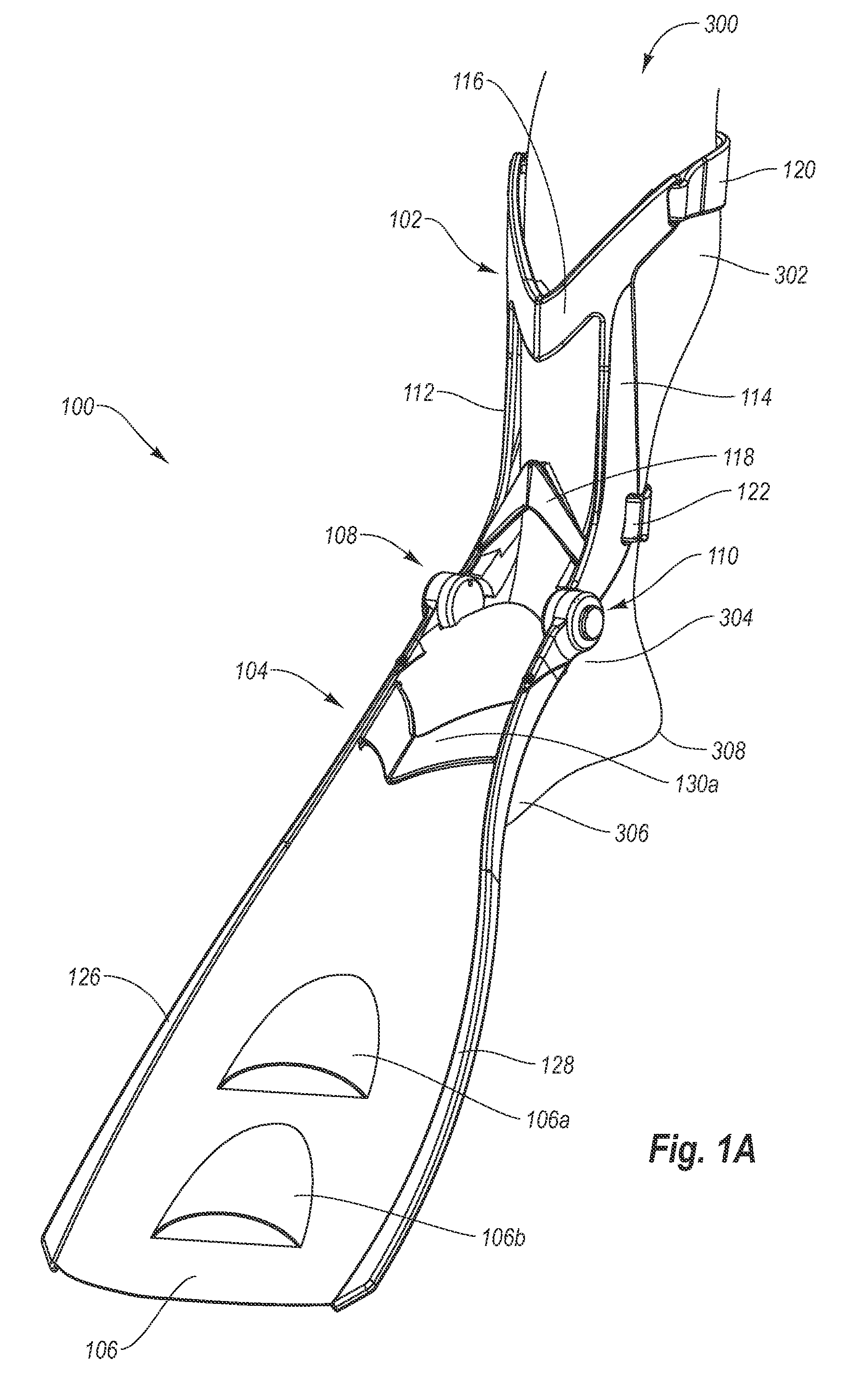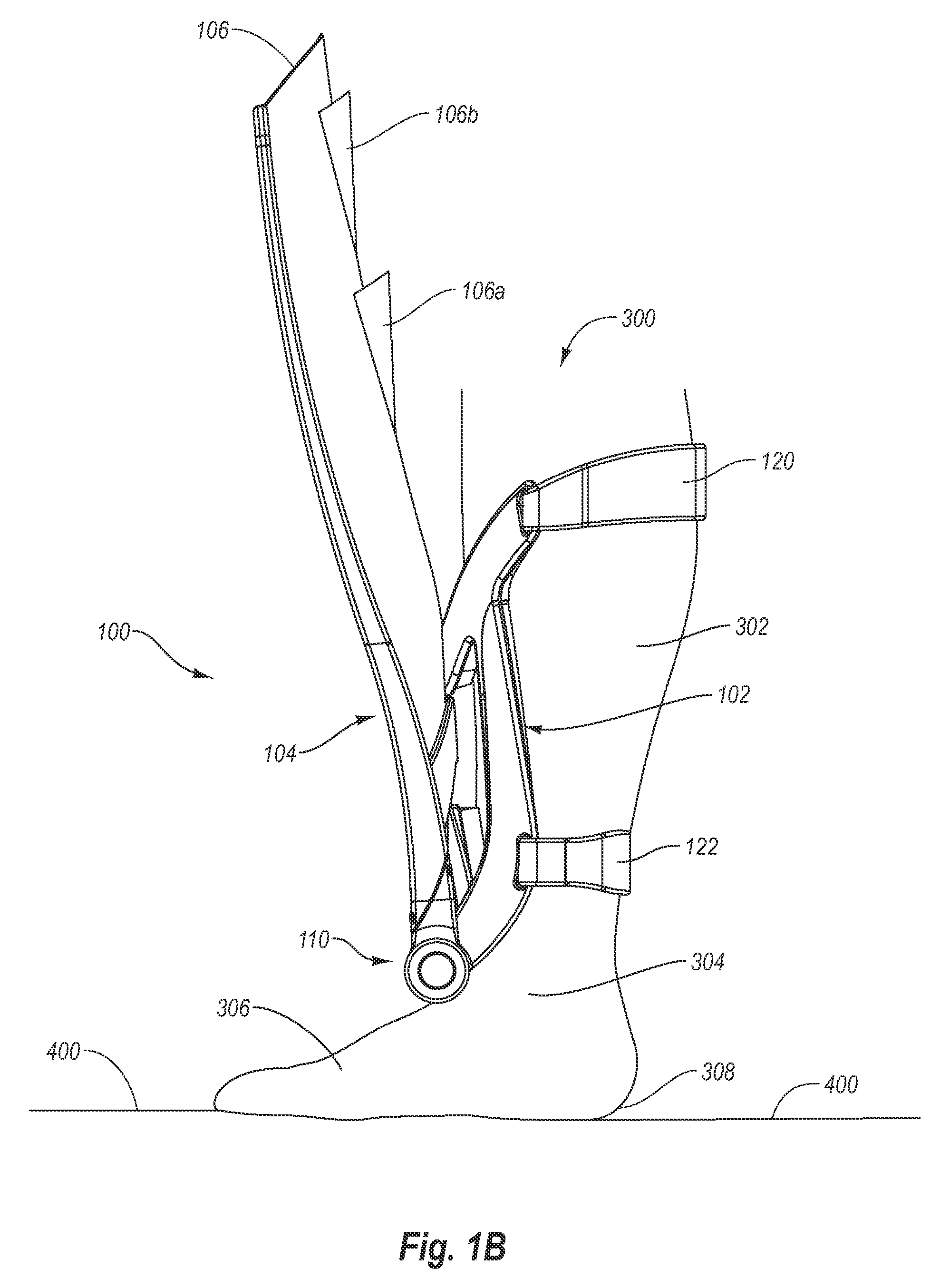Swim fins
a technology of swim fins and fins, applied in the field of swim fins, can solve the problems of severe ankle strain and calf muscle fatigue, human feet providing relatively poor thrust, and typical swim fins having several problems
- Summary
- Abstract
- Description
- Claims
- Application Information
AI Technical Summary
Benefits of technology
Problems solved by technology
Method used
Image
Examples
first example swim
Fin
[0038]As disclosed in FIGS. 1A, 1B, and 1C, a first example swim fin 100 generally includes an upper support frame 102, a lower support frame 104, a lower blade 106 attached to the lower support frame 104, and a pair of hinge assemblies 108 and 110 connecting the upper support frame 102 and the lower support frame 104. The hinge assemblies 108 and 110 connect the upper support frame 102 to the lower support frame 104 and allow the lower support frame 104 to be rotated upward from a “swimming position,” disclosed in FIG. 1A, to a “walking position,” disclosed in FIG. 1B, while the upper support frame 102 remains securely attached to the lower leg 302 of a swimmer 300. The swimming position disclosed in FIG. 1A enables the swimmer 300 to swim through water with increased thrust as compared to swimming with a bare foot. The walking position disclosed in FIG. 1B enables the swimmer 300 to walk on a surface 400 without the swim fin substantially contacting the surface 400 and without ...
second example swim
Fin
[0049]With reference now to FIGS. 2A, 2B, and 2C, a second example swim fin 100′ is disclosed. The swim fin 100′ is identical to the swim fin 100, with the exception of the lower support frame 104′, the blade 106′, the hinge assemblies 108′ and 110′ and a latch 132.
[0050]As disclosed in FIGS. 2A, 2B, and 2C, the lower support frame 104′ includes an additional cross member 130b that augments the supporting function of the cross member 130a by supporting the braces 126′ and the 128′. Further, the blade 106′ incorporates hydrofoil chutes 106c, 106d, and 106e that allow water to be pushed through the blade 106′ in a direction that is generally inline with the forward motion of the swimmer 300. Like the chutes 106a and 106b, the chutes 106c, 106d, and 106e may be formed from a material that allows the chutes to transition from protruding from the top surface of the blade 106 (during a down stroke) to protruding from the bottom surface of the blade 106 (during an up stroke) in order to...
PUM
 Login to View More
Login to View More Abstract
Description
Claims
Application Information
 Login to View More
Login to View More - R&D
- Intellectual Property
- Life Sciences
- Materials
- Tech Scout
- Unparalleled Data Quality
- Higher Quality Content
- 60% Fewer Hallucinations
Browse by: Latest US Patents, China's latest patents, Technical Efficacy Thesaurus, Application Domain, Technology Topic, Popular Technical Reports.
© 2025 PatSnap. All rights reserved.Legal|Privacy policy|Modern Slavery Act Transparency Statement|Sitemap|About US| Contact US: help@patsnap.com



